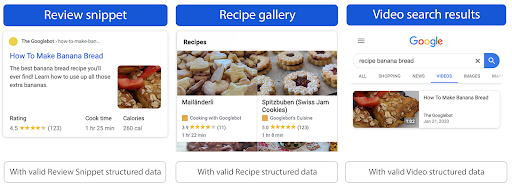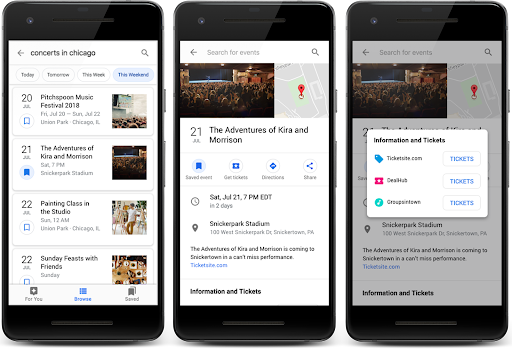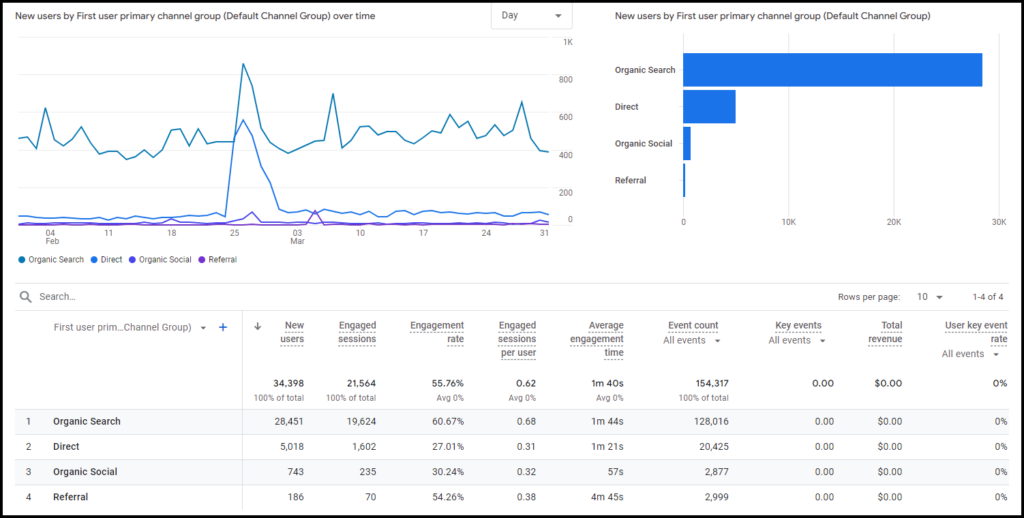
Measuring Content Quality for SEO Success
As an SEO veteran with over a decade of working with clients, I’ve seen the changes within the search landscape. Today, let’s delve into the interconnectivity between content quality, keyword rankings, rich results, and direct traffic. These are all crucial pieces of the SEO puzzle.
Content Quality: The Foundation of SEO Success
Think of content quality as the bedrock of your website. Great web pages and blog posts attract, engage, and ultimately satisfy your audience. Google does not want to crawl the entire internet, so they have to start somewhere. The starting point is usually websites with informative, well-written, and relevant content that answers user queries comprehensively.
This is where content analysis tools, like SEMrush, come in. They help assess your content’s readability, keyword usage, and overall structure, allowing you to identify areas for improvement. After identifying areas of improvement, refresh or update your content, and then monitor the results.
The real insight comes from combining content metrics with web analytics. Whether data is from Google or another SEO tool, you can effectively gauge if you’re improving search visibility. Consider some metrics that will indicate you are on the right course.
Keyword Rankings: Visibility on the Search Stage
Keywords are the search terms users type into search engines. Ranking higher for relevant keywords increases your website’s visibility and potential clicks. Google’s Search Console tool provides valuable insights into your website’s keyword performance, allowing you to:
- Track your ranking progress
- Identify keywords that are generating traffic to your site
- Assist in keyword research to unlock new opportunities
The Quantity of Well-Ranked Keywords: A Sign of Content Strength
The number of keywords a page ranks well for isn’t a direct ranking factor itself. However, the quantity of well-ranked keywords can be a strong indicator of a page’s performance on Search Engine Results Pages (SERPs). Here’s how:
- Signals Content Relevance and Depth: A page ranking for a variety of relevant keywords indicates its content comprehensively addresses the topic. Google Search engines sees this as a sign that the page is highly relevant to a broader search intent, not just a single keyword. This can boost the page’s overall ranking potential for related keywords, even if they aren’t specific targets.
- Demonstrates Semantic Understanding: When a page ranks for multiple related keywords, it suggests the content uses semantic language effectively. This means it incorporates synonyms, related terms, and broader concepts surrounding the main keyword. Search engines recognize this as a sign of in-depth understanding. And as a result, they will use it to improve the page’s relevance for similar searches.
- Enhances User Experience: Creating quality content often results in content that provides a comprehensive answer to various user intents. These pieces of content cater to a wider audience with diverse search queries related to the topic. This can lead to higher click-through rates (CTR) and longer dwell times on the page, both positive ranking signals for search engines.
Semantic targeting refers to the practice of optimizing for one keyword and ranking for several others. It involves creating content that not only targets the main keyword but also incorporates related keywords, synonyms, and variations. An increase in the quantity of well-ranked keywords signifies proper use of semantic targeting and high-quality content. Ultimately, you should see improvements in your page’s performance on SERPs and attract a wider, more engaged audience.
Rich Results: Standing Out from the Crowd

Rich results are enhanced search results that go beyond the basic text snippet. They can include images, videos, star ratings, and more. Appearing in rich results can significantly boost your click-through rate (CTR) as they grab user attention more effectively.
SEMrush can help you identify opportunities for rich results. First, run a keyword report to list pages that have search features. Next, dissect Semrush’s report, allowing you to pinpoint target keywords and features. Finally, make necessary edits to pages on your site to grab those rich results.
After earning enhanced search results, look at your **Google Search Console** The Enhancements reports verify you’re progressing correctly. You will be able to monitor your performance in areas such as video, events, etc. Once again, Google will only unlock enhanced search results on pages with high-quality content.
Leveraging Structured Data Markup is the key to unlocking the power of rich results. It involves adding specific code to your website, providing search engines with structured and understandable information about your content. This allows them to display your content as rich results in the SERPs, unlocking the benefits mentioned above.
Implement structured data following best practices and specific guidelines for each type of rich result to avoid any errors. Google Search console’s Enhancements report is once again your friend. It alerts you of any errors with your structured data and suggests changes you should make.
Types of Rich Snippets:
- Product Snippets: Displaying product details like price, availability, and ratings.
- Recipe Snippets: Showcasing cooking time, ingredients, and calorie information.
- Event Snippets: Highlighting event dates, locations, and descriptions.

By implementing structured data markup and leveraging rich results, you can enhance user experience. These featured snippets provide users with more information upfront. Not only does this increase your website’s visibility, but click-through rate in SERPs, as well.
However, remember:
- Focus on quality content first: Rich results are not a substitute for high-quality, informative content. Ensure your content is relevant, valuable, and meets user search intent.
- Use structured data markup accurately: Make sure you test the codes you create to ensure they are valid.
- Monitor and analyze: Track the impact of rich results on your website’s traffic and user engagement. This allows you to refine your approach and maximize the benefits.
By strategically incorporating proper structured data markup alongside high-quality content, you can significantly **boost your SEO success**, attract more qualified traffic, and ultimately achieve your website’s goals.
Direct Traffic: Building Brand Loyalty
Direct traffic refers to visitors who access your website by typing in your URL directly or using bookmarks. This indicates brand awareness and user loyalty, signifying that your audience recognizes and trusts your brand. Google Analytics is your go-to tool for tracking direct traffic and understanding user behavior once they land on your website.
Direct Traffic as a Validation of Content Quality and SEO Success
Direct traffic often serves as a quality indicator for your content and the overall success of your SEO strategy. Let’s break down why it’s important and how you can measure its impact in Google Analytics.

Why Analyzing Direct Traffic Matters
When a user directly types in your website’s URL or uses a saved bookmark, it indicates they remember your brand. This level of brand recognition often stems from positive experiences with your website’s content (relevance, quality, ease of finding information). Strong SEO strategies generally lead to increased brand awareness and visibility. As more users encounter your website through search results, social media, or other channels, they become more likely to remember your website and access it directly in the future.
High levels of direct traffic can suggest that your content is engaging and memorable. When users find your content valuable, they’re more likely to revisit it and potentially share it within their networks, further amplifying your reach.
How SEO Success Impacts Direct Traffic
- Improved Search Rankings: Higher rankings in search results increase your visibility, leading to more clicks and the potential for users to remember your website.
- Strong Brand Presence: A robust SEO strategy helps build your brand online. A well-established brand creates trust and encourages users to access your content directly.
- Memorable Content: Optimized content designed with user intent in mind leaves a lasting impression and compels users to return directly to your website.
Measuring Direct Traffic in Google Analytics
Here’s how to analyze direct traffic within Google Analytics:
- Acquisition Reports: Navigate to Acquisition > All Traffic > Source/Medium.
- Look for “(direct) / (none)”: This row indicates direct traffic sessions with no source or medium information attached.
- Segmenting Data: Use advanced segments to drill down into direct traffic behavior:
- Geography: Identify regions where you have the strongest direct traffic.
- Landing Pages: See which pages users are accessing most directly.
- New vs. Returning Users: Analyze if returning users are more likely to exhibit direct traffic behavior.
- Key Metrics based on Direct Traffic:
- Volume Over Time: Monitor trends in direct traffic – increases could indicate positive SEO results or brand awareness campaigns.
- Session Depth: Analyzing session depth (pages per session) and average session duration can offer helpful insights into the engagement level of direct visitors. While low bounce rates are generally desirable, it’s important to consider the nature of your content and user behavior. Some pages, like landing pages, naturally have a higher bounce rate, given their intended purpose.
- New visitors: An upsurge in new users could imply that your SEO strategy is successfully attracting relevant users interested in your content. High-quality content can naturally lead to users bookmarking your site, contributing to direct traffic from new users. Determine if they arrive directly and engage with your content, using the other session metrics above.
- *Analyze trends over time: Look for sustained increases in new users with direct traffic, not just isolated spikes, to establish a potential link to SEO efforts.
In Summary
Analyzing direct traffic provides insights into content quality, relevance, and the effectiveness of your SEO strategy. While not a direct ranking factor, consistent increases in direct traffic demonstrate that your website is providing value. Your site is building a loyal audience and successfully branding itself in the minds of users.
The Interconnected Web: How They All Work Together
High-quality content that effectively targets relevant keywords can increase your website’s organic search ranking. As a result, you will see not only more organic traffic, but direct traffic as well. As your brand awareness grows, Google rewards you with:
- Higher ranking on SERPs
- rich result opportunities
- Indexing more pages
This virtuous cycle emphasizes the importance of a holistic SEO approach.
Contact Black Kite Marketing Today!
In order to accurately measure SEO Success don’t forget to:
- Consistently create high-quality, user-centric content.
- Utilize tools like SEMrush and Google Search Console to analyze your content and track keyword performance.
- Semantic targeting naturally attracts rankings for a wider range of related keywords.
- Aim for rich results to stand out in search engine results pages.
- Monitor and understand your direct traffic through Google Analytics.
By understanding how your content impacts these factors, you can unlock the true potential of your SEO strategy. Using the right tools allows you to identify opportunities to improve your content. An additional benefit, most tools will also help monitor progress. Quality content leads to driving traffic, brand awareness, and ultimately, success.
Now that you know how to identify SEO success, you might be wondering: where do I start? This work takes time, skill and expertise. That is where we come in. If you are in need of SEO services contact Black Kite Marketing at (516) 259-1813. We can help you enhance your search engine rankings and now you know how to grade our work.

